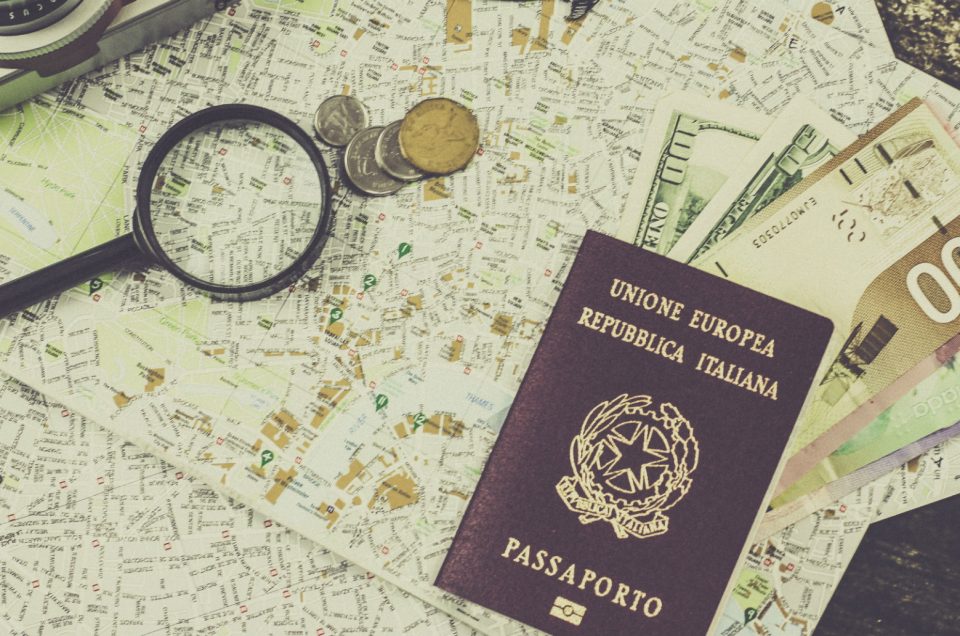Travel is a luxury that most of us take for granted. We choose a destination, book a ticket, hop on a plane et voila we are wherever we envisioned to be. And then us being humans and us being used to getting whatever we want, more often than not, we tend to overlook the importance of our most valuable travel companion. We complain about long queues at the check-in counter and we get frustrated about delayed flights but we don’t stop and think about the significance of the small booklet in our hands.
Without it, you are legally denied of leaving and entering a particular country. Without it, you do not have the guarantee of a safe passage nor have the assurance of being protected under international law. A passport is so much more than a mere piece of document. It carries within its pages the history of past and present civilizations.
Today, passports are defined as “an official document issued by a government, certifying the holder’s identity and citizenship and entitling them to travel under its protection to and from foreign countries.” Okay. That definition is relevant and makes a lot of sense. But, really, how did the notion of a travel document come about?
The very idea of a passport predates democracy and diplomacy. The moment powerful empires flourished, land divisions between territories were drawn and redrawn. Regulations for people traveling from one domain to another were thus implemented. There was then a need for a rough concept of national identity.
The earliest reference to a document that served a similar purpose as a passport is found in the Hebrew Bible. Nehemiah of Persia asked for permission to travel Judea. Nehemiah was then given a letter by the king to ensure safe passage throughout the land.
The notion of having some form of identification containing physical descriptions while traveling was first seen in ancient China. Details such as name, age, and body features were required in the official document. The zhuan then determined a citizen’s ability to move freely throughout areas under Chinese jurisdiction.
On the other side of Asia, you needed a proof of commitment to the state and not everybody was given the freedom to be issued travel documents. In the medieval Islamic Caliphate, only the people who paid their taxes to the state were given a bara’a or a receipt. This receipt then allowed citizens to travel to different regions of the Caliphate.
The word passport itself has roots dating from the late 15th century. The French words passer (meaning to pass) and port put together denotes authorization to enter or depart from a port. In medieval Europe, documents were required in order to pass through different territories. Local authorities issued travel documents to foreign travelers that contained a list of towns the holder is cleared for passage (sounds more like a visa).
The modern idea of a passport serving as proof of citizenship or allegiance to a specific country was first thought of at the time of King Henry V of England. The rulers of England wanted to give their subjects the ability to prove who they were while traveling a foreign land and the rest is history.
During the mid 19th century, Europe underwent a widespread railway infrastructure expansion. International travel became so rampant that European countries faced the challenge of properly implementing border laws. Subsequently Europeans experienced a relaxation of the passport system enabling them to leisurely travel across the continent for a certain period before the dawn of World War I.
In the midst of war, security measures had to be considered. European governments increased passport regulations within their borders and the system remained in place even after the war. Standardized passport guidelines were then introduced through a binding conference under the supervision of the League of Nations.
It was only in 1980 that the International Civil Aviation Organization issued the passport standards that we know today. The ICAO recommended standardization guidelines to national governments across the globe to make traveling easier for anybody from any nation. Included within these guidelines are the booklet size and format for the cover, title page, and data page. The booklets also contain blank pages for stamps and visas. Machine-readable passport and biometric passport standards are eventually issued still under the patronage of ICAO. Issuance of passports on the other hand is under your nation’s control (along with passport color choices, in case you were wondering).
Humans have an inherent need to organize and compartmentalize. It might not be the grandest idea to let a booklet define who you are but in this golden age of travel there is an undeniable need to systematize people while traveling. Passports might not specifically define your cultural identity but it does serve its purpose of identifying your citizenship and it does serve its purpose of entitling you to your safety. From handwritten letters to state of the art biometrics, the passport truly has been a testament to the development of humanity and civilization.
With technological advancements at every corner, do you ever wonder what’s in store for the future of passports?





